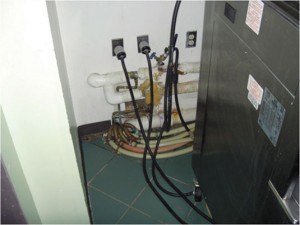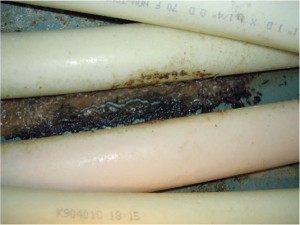
Fig. 1: Can you spot the likely breeding site of the vinegar fly in this picture?
photo: Mark Sheperdigian/Wikimedia/Bbski
Can you see the breeding site of the vinegar fly (Drosophila spp.), aka the small fruit fly, in Fig. 1? Maybe not, but you know where it has to be. If you get close enough (Fig. 2), you can see the problem: Organic matter has been trapped under the collection of hoses. It’s become wet, and the decay is producing vinegar flies.
When searching for vinegar flies, keep an eye out for areas that are difficult to clean. In practical terms, difficult-to-clean often translates into doesn’t-get-cleaned. While these are often the immediate (proximal) cause of fly problems, they may not be the ultimate (root) cause. Debris builds up quickly because the hoses are on the floor.
In this case, the decaying debris is a proximal cause, but not the root cause. The root cause is that the hoses are on the floor with no easy way to clean under them. You can see that the floor is being swept and mopped, but only up to the hoses, which allows the breeding site to develop.
The most common recommendation for this condition seems to be: “Clean decaying organic matter from under hoses on floor behind soda vending.” The proper recommendation, however, should be: “Hoses behind soda vending should be cleaned beneath and raised off the floor to prevent future breeding sites.”

A closer look reveals the problem. photo: Mark Sheperdigian/Wikimedia/Bbski
It’s always good to find the source of the vinegar flies, but it’s far better to prevent future infestations in the process. This situation is best addressed by showing the client the problem. There’s no substitute for a physical demonstration. Solving a pest problem and preventing future pests are the heart and soul of integrated pest management.
You can reach Mark Sheperdigian, BCE, at shep@rosepest.com.
Leave A Comment